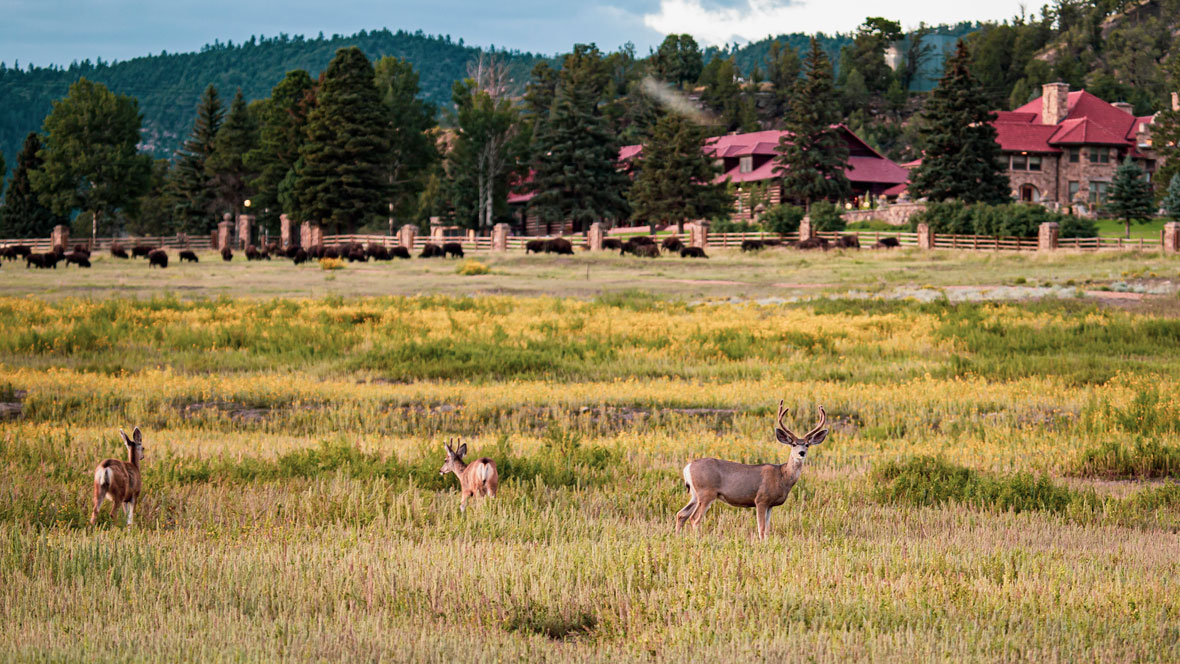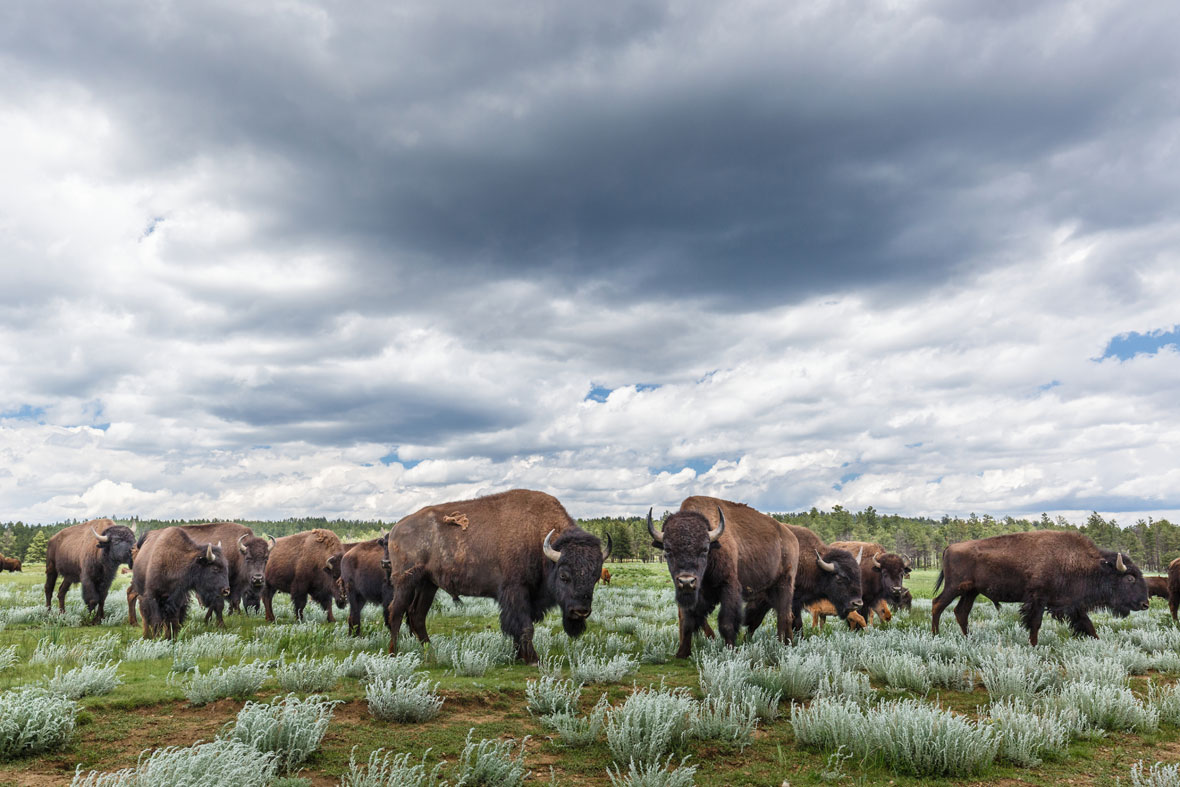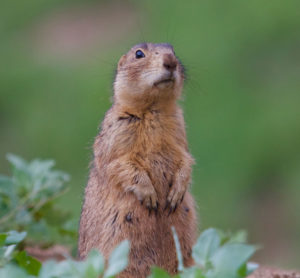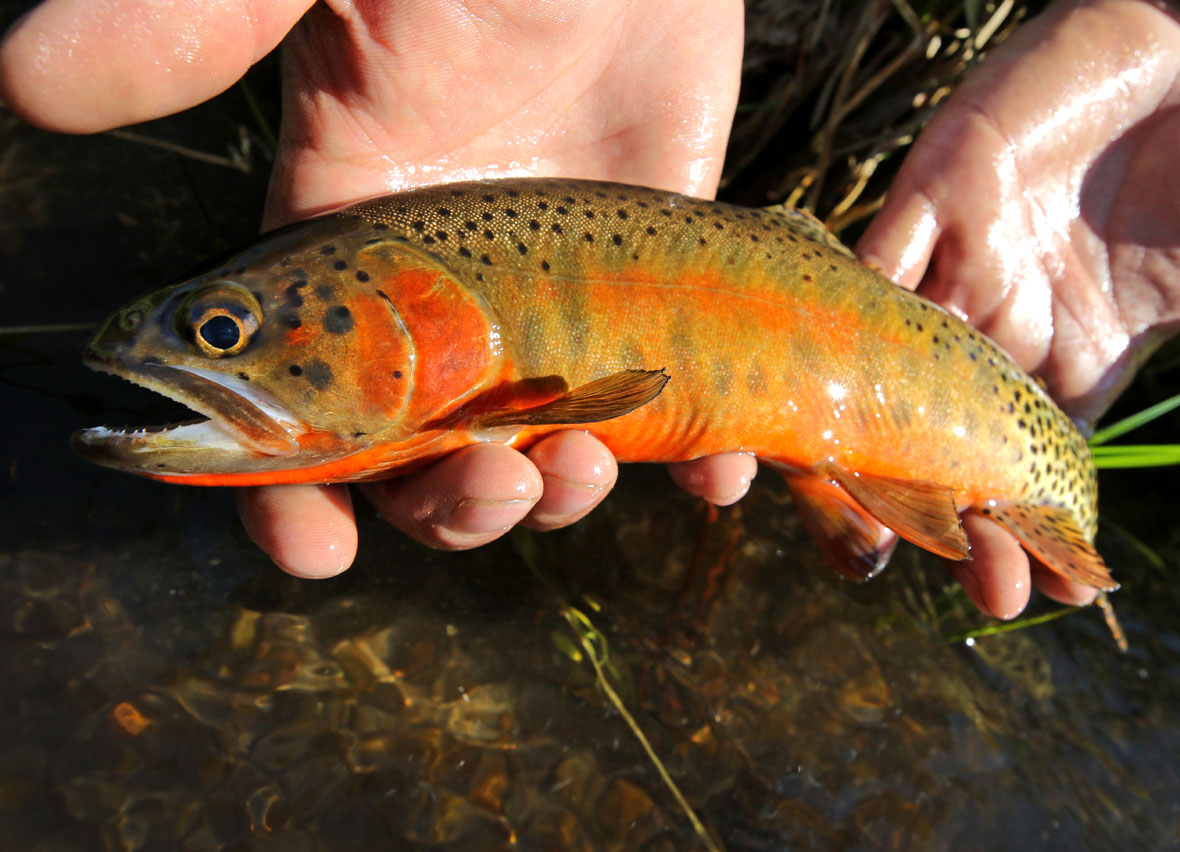
From overworked land to wildlife sanctuary: Ted Turner’s Vermejo reserve strives for sustainability
BY AMY MATHEWS AMOS, FEBRUARY 17 2022
When media mogul Ted Turner bought Vermejo in 1996 it was damaged goods. In the 155 years since the first Mexican land grant to settlers, Vermejo had been worked hard. Farming, overgrazing, logging, and extensive coal mining had taken their toll.
But the ranch was also huge: one of the biggest (if not the biggest) ranches in the United States, spanning 558,000 acres – almost the size of a small state. Tucked away in a remote corner of northern New Mexico, this vast piece of land had potential.
Ted (as he likes to be called) is known today as a passionate conservationist who puts his considerable money where his mouth is. He owns 15 ranches in the United States, plus three in Argentina, managed largely for conservation and restoration of native species. He created the Turner Foundation, which provides grants to organizations working to protect and restore natural systems, and the Turner Endangered Species Fund whose motto is “Save Everything.”
At Vermejo, that conservation ethic has translated over time into a spectacular natural landscape that supports imperiled and endangered species such as American bison, prairie dogs, swift fox, burrowing owl, and Rio Grande cutthroat trout, plus the usual charismatic mix of New Mexican wildlife: elk, mule deer, pronghorn, mountain lion, black bear, and more. Its diverse habitats – from shortgrass prairie at the lower elevations to conifer forests on the mountain slopes to treeless alpine peaks – now show few signs of past abuse.

Ted’s values and personality loom large at Vermejo and his approach is unique. His goal isn’t just conservation, but conservation that pays for itself. That means that some of the 1,500 head of bison on the reserve will end up as bison burgers. It means that some of the Rio Grande cutthroat trout will find themselves on the end of a fly rod. And it means that visitors can stay at the lodges and guest cottages on the reserve, eat its fine food, and hunt, fish, hike, or enjoy guided wildlife tours among other activities. Vermejo, a Ted Turner Reserve as it is officially known, is a luxury resort, whose customers pay to support New Mexico’s native wildlife.
This “wild working landscape” concept is an important part of the “Turnerverse,” Mike Phillips, the energetic Director of the Turner Endangered Species Fund told me. “It’s never enough just to have bison and be a rancher. [Ted] wants to do both at scale.” And so bison and prairie dogs and other animals are the wild components of a working landscape that produces good food while conserving native species. “This concept is our north star,” Phillips stressed.
Joel Lemons, Assistant General Manager at Vermejo, clarified this further as he drove me around parts of the property one fine June day. “Our mission is to manage Turner lands in a financially sustainable yet ecologically sensitive manner while promoting the preservation of native species and their habitats,” he said.

Lemons is a self-described cowboy who loves to hunt, fish, and backpack. Four years ago he parlayed his livestock experience into a position that now has him managing the bison herd – reportedly one of the few genetically pure American bison herds in the country. Although the herd appears wild, Lemons and his team still have to control it in certain ways. Centuries ago, bison wouldn’t need any attention to thrive – they had most of North America to graze and millions of potential mates surrounding them. But although Vermejo is big, it isn’t that big. That means the Vermejo crew sometimes moves bison to parts of the reserve with fresh forage so that they don’t overgraze their favorite spots. The crew also culls bulls at five years of age. Older bulls tend to dominate mating, chasing younger males away from females. But when only a handful of bulls successfully mate, the offspring are genetically similar – a dangerous precursor to inbreeding in isolated populations such as this one.
One management measure you won’t find at Vermejo is predator control: mountain lions, bears, and other carnivores are welcome, even if it means lower profits or fewer elk for hunting. Lemons estimates that the area supports 60 to 80 mountain lions. In his four years at the reserve, he has seen eight himself. And as we headed out on our tour, we spotted a large black bear ambling among the ponderosa on the side of the dirt road.

Black-footed ferrets – the most endangered carnivore in the world according to Phillips – eat only prairie dogs. When prairie dog colonies died out, so did the ferrets. The U.S. Fish and Wildlife Service began breeding ferrets in captivity and reintroducing them into appropriate habitats in recent decades. For a while, Vermejo was one of those places. But repeated droughts meant fewer prairie dog pups; not enough to support the ferrets. The population died off. Phillips warned that with climate change, drought might be the new normal, making Vermejo unfit for black-footed ferrets. The reintroduction program is on hold for now but Phillips hasn’t ruled it out for the future. “We’re not giving up.”

In contrast, the reintroduction of Rio Grande cutthroat trout was a success. This species declined to about 10% of its former range when western waters in the U.S. were stocked with non-native rainbow, brown, and brook trout. Non-native trout can out-compete cutthroat trout and breed with them, creating hybrid species.
Lemons showed me the sole remaining barrier in the reserve’s Costilla watershed, used to separate “pure” waters upstream from those below. To rid the watershed of non-native trout, managers poisoned the waters with rotenone – a sometimes controversial chemical derived from tropical plants that can kill some aquatic life beyond the targeted fish, but disappears quickly in the environment. At Vermejo, managers started in the Costilla headwaters, clearing out non-natives and then stocking with native Rio Grande cutthroats. The barriers – essentially dams with fast flowing water rushing over them – prevented non-natives in the waters downstream from re-entering the upstream waters. By continuing this process further and further downstream, the watershed eventually supported only native trout. Other watersheds on the reserve continue to support non-native trout.
As we drove back to headquarters, Lemons mused about Ted’s passion to save imperiled species, which drives everything at the Vermejo. “I think it’s cool to work for a guy who believes that,” he said. “He works for the little guy. He works for the prairie dogs.”
And just about everything else.